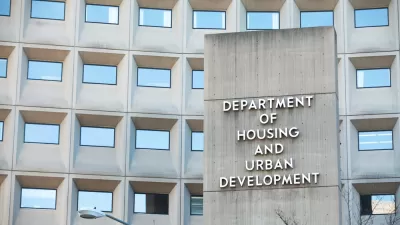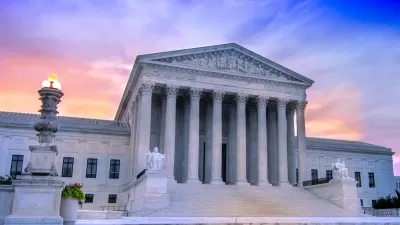A decision by the U.S. Supreme Court this week could reframe the separation of church and state, especially with regard to the flow of public funding and aid programs.

"The Supreme Court ruled on Monday that the state of Missouri cannot deny public funds to a church simply because it is a religious organization," reports Emma Green.
The relevance of the court ruling in Trinity Lutheran v. Comer is framed in this article and others for its potential to redefine the legal boundaries between church and state, but one look at the controversy that led to the court case reveals its implications for planning: the case grew out of a request by Trinity Lutheran Church in Missouri for a state grant to resurface its playground. Though the project seemed a strong candidate for the grant, "Missouri denied the funding under a state constitutional provision that prohibits public money from going to religious organizations and houses of worship."
According to Green, many states would have made the same decision as Missouri in this case, under the power of so-called "Blaine amendments." Missouri and other states will now have to re-evaluate there consideration of churches applying for funding from secular, neutral aid programs. "This is the first time the court has said the government is required to provide public funding directly to a religious organization," according to Green, with implications for such institutions as private schools, but also, significantly, for anyone who applies for competitive federal funding for development projects.
FULL STORY: The Supreme Court Strikes Down a Major Church-State Barrier

Alabama: Trump Terminates Settlements for Black Communities Harmed By Raw Sewage
Trump deemed the landmark civil rights agreement “illegal DEI and environmental justice policy.”

Study: Maui’s Plan to Convert Vacation Rentals to Long-Term Housing Could Cause Nearly $1 Billion Economic Loss
The plan would reduce visitor accommodation by 25% resulting in 1,900 jobs lost.

Why Should We Subsidize Public Transportation?
Many public transit agencies face financial stress due to rising costs, declining fare revenue, and declining subsidies. Transit advocates must provide a strong business case for increasing public transit funding.

Paris Bike Boom Leads to Steep Drop in Air Pollution
The French city’s air quality has improved dramatically in the past 20 years, coinciding with a growth in cycling.

Why Housing Costs More to Build in California Than in Texas
Hard costs like labor and materials combined with ‘soft’ costs such as permitting make building in the San Francisco Bay Area almost three times as costly as in Texas cities.

San Diego County Sees a Rise in Urban Coyotes
San Diego County experiences a rise in urban coyotes, as sightings become prevalent throughout its urban neighbourhoods and surrounding areas.
Urban Design for Planners 1: Software Tools
This six-course series explores essential urban design concepts using open source software and equips planners with the tools they need to participate fully in the urban design process.
Planning for Universal Design
Learn the tools for implementing Universal Design in planning regulations.
Smith Gee Studio
Alamo Area Metropolitan Planning Organization
City of Santa Clarita
Institute for Housing and Urban Development Studies (IHS)
City of Grandview
Harvard GSD Executive Education
Toledo-Lucas County Plan Commissions
Salt Lake City
NYU Wagner Graduate School of Public Service





























